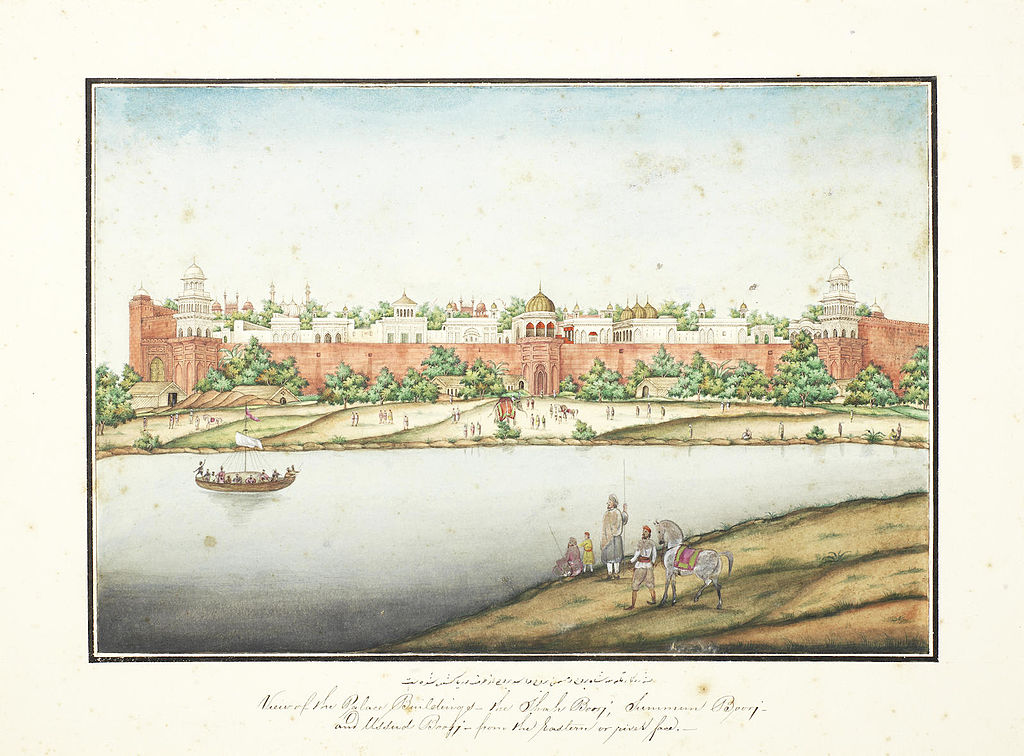
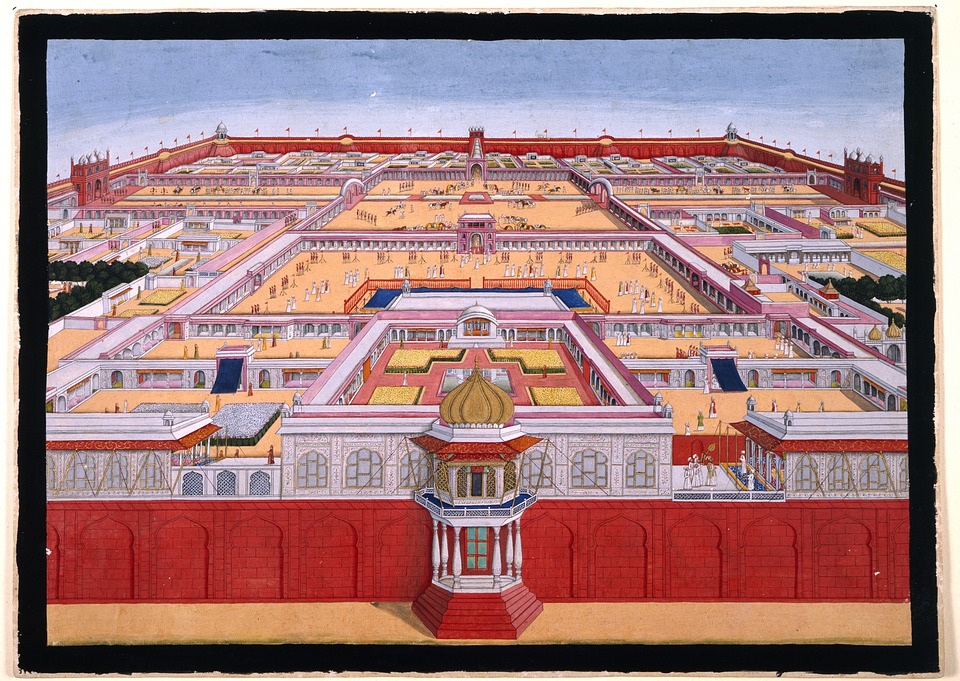
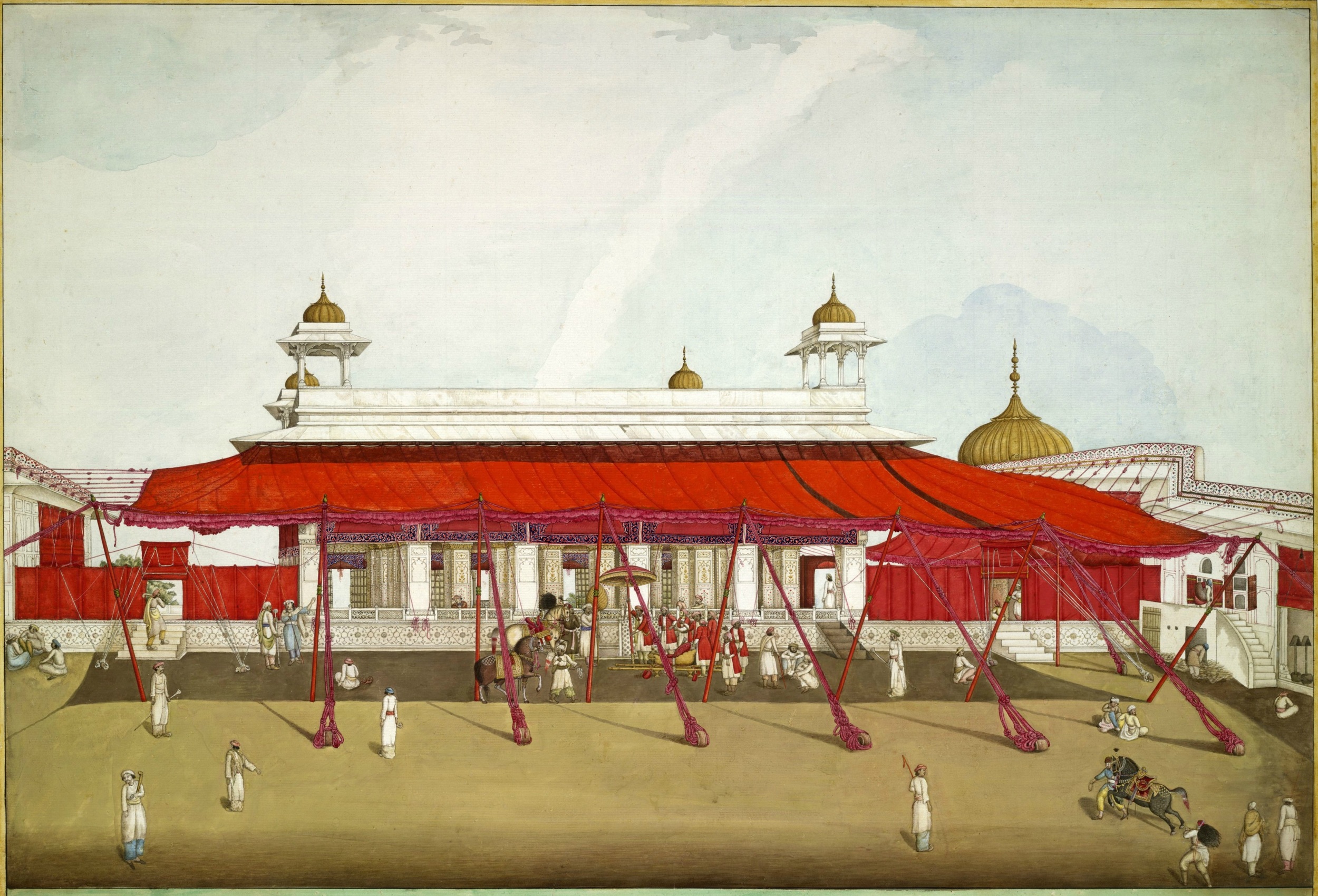

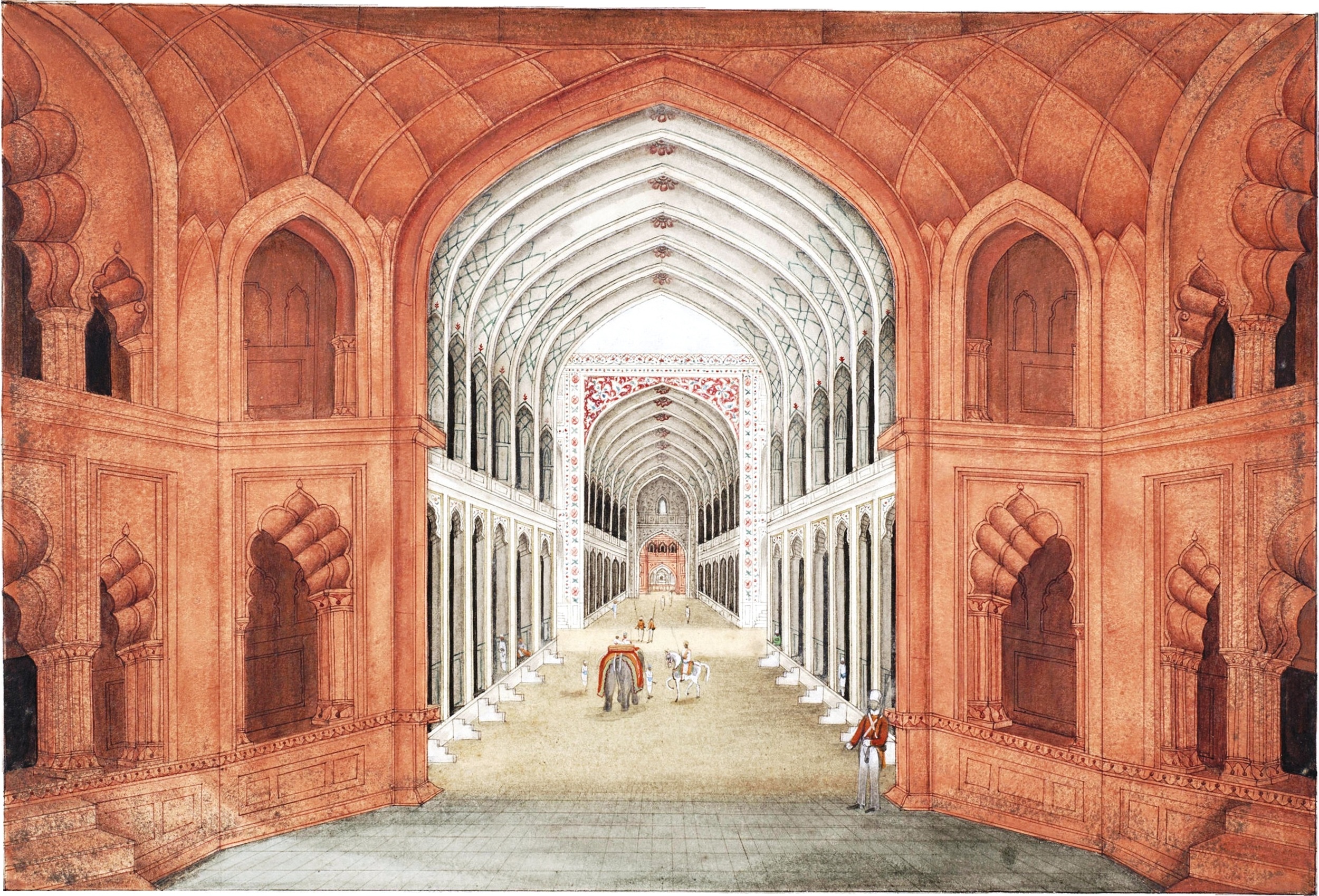
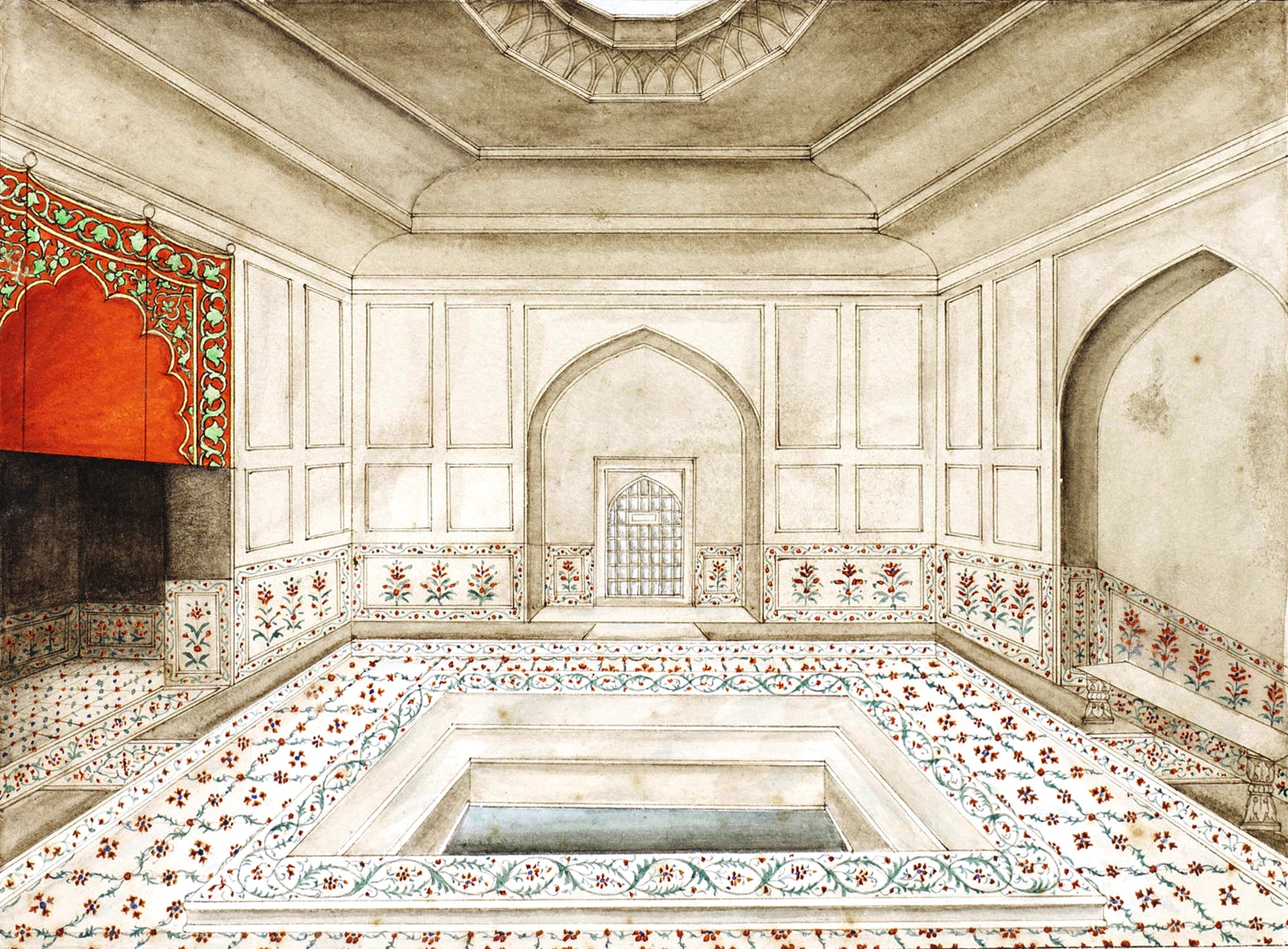
Ghulam Ali Khan's paintings reveal the splendor of This Mughal palace — now a sad shadow of its glorious past.
The images in the slideshow are watercolor paintings by Ghulam Ali Khan, the last royal Mughal painter. Thirty-one of his works were published as Sketches of The Delhee Palace & Delhee in 1854.
Oh, to have seen it in its glory days — before the Brits got their mitts on it, ransacking and demolishing much of it until it was but a shadow of its former glory.
Originally called Qila-e-Mubarak, or the Blessed Fort, its name was changed by the British. They didn't see it as so blessed, as they tore much of it apart, stripped it of its riches and built barracks within. They called it the relatively unimaginative Red Fort after the crimson sandstone used to construct the ramparts. The name stuck, and the locals started referring to it as Lal Qila in the native tongue.
“The diamond is said to be cursed, bringing bad luck to any man who wears it.”
Ironically enough, parts of the structure were actually once white, painted with lime plaster, according to IndiaTV and other sources.
Constructed over a decade, beginning in 1638, the Red Fort was designed by the architect Ustad Ahmad Lahauri. He's the man who's also behind a modest mausoleum you might know: the Taj Mahal.
The Red Fort was the Mughal emperors' palace for almost 200 years.
Bahadur Shah Zahar, the last of the line, was tried for treason by the British in the Diwan-i-Khas, the Hall of Private Audience. This is the part of the Red Fort where he'd greet his guests and couriers.
Emperor Zahar, who was 82 at the time, was found guilty, stripped of his title and exiled to Rangoon in what is now Myanmar.
A Cursed Diamond
The Diwan-i-Khas was said to have a solid gold frame studded with precious stones, including the world's largest diamond, the Koh-i-Noor (Persian for Mountain of Light). It was pillaged long ago and is currently part of the Crown Jewels in England.
It was the inspiration behind Wilkie Collins' mystery novel The Moonstone.
For, the diamond is said to be cursed, bringing bad luck to any man who wears it. Cleverly exploiting a loophole, only female members of the British royal family will put it on. –Wally




















